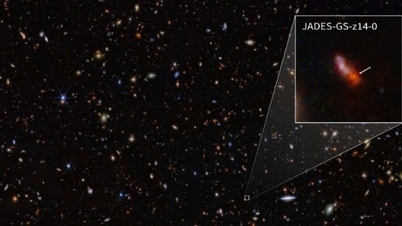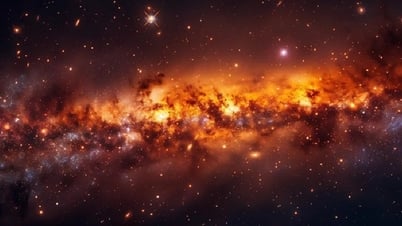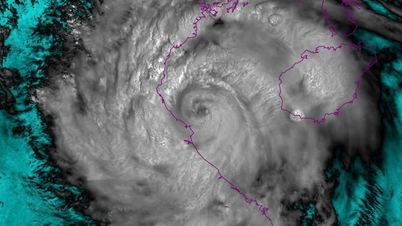James Webb's New Technical Achievement

Image of the central star CE Antliae and the exoplanet TWA-7b (Image: Research team).
The James Webb Space Telescope (JWST) has just set an important milestone in its journey to conquer the universe, when it discovered and directly photographed TWA-7b for the first time.
This is an exoplanet, and also the lightest extrasolar world ever directly imaged by humans.
TWA-7b is a cold gas planet with an estimated mass of about 0.3 times that of Jupiter, or approximately 100 times that of Earth. The planet orbits a young star called TWA-7, located about 111 light-years from Earth in the constellation Antlia.
What is special is that TWA-7b has an orbit very far from its parent star, at a distance more than 52 times the distance from Earth to the Sun, equivalent to the outer region of the Kuiper belt, and even far beyond the orbit of Pluto when compared in the Solar System.
The star TWA-7 is still very young, only about 6.4 million years old. It is surrounded by a disk of dust and gas left over from its star-forming period, where planets may be forming.
The structure of this disk is divided into three distinct rings, each with characteristic gaps that suggest the presence of a young planet clearing away surrounding material.
It was through one of these gaps that the James Webb Space Telescope detected a faint infrared signal from TWA-7b using its MIRI infrared wavelength meter, combined with a special system that blocks light from the parent star.
This discovery not only directly confirms the existence of a young planet with a mass below Jupiter, but also tests long-standing hypotheses about how planets interact with their disks during formation.
Lightest planet ever discovered in images

The James Webb Telescope at a research facility, before being launched into space (Photo: NASA).
According to a research team led by astronomer Anne-Marie Lagrange from the Paris Observatory (France), TWA-7b is the first exoplanet light enough to be directly imaged, and is a sign that the James Webb telescope will be able to detect planets with masses only 25 to 30 times that of Earth in the near future.
Previously, most exoplanets were discovered indirectly, through changes in the star's light when the planet passed in front of it, or small fluctuations due to gravitational pull.
Direct imaging is a breakthrough because it allows for more detailed studies of the physical properties, atmospheric structure and environment of planets, data that is difficult to obtain using traditional methods.
Notably, TWA-7b's estimated surface temperature is around 320 Kelvin (47 degrees Celsius), much lower than that of hot planets close to their stars, and is not much affected by host star radiation due to its distant orbit.
These conditions are ideal for future spectroscopic studies to analyze atmospheric structure and chemical composition, which are key pieces of information in the search for habitable worlds.
To date, humans have confirmed nearly 6,000 exoplanets in the Milky Way, but only about 80 of them have ever been directly imaged.
With its superior infrared observation capabilities, James Webb is opening a new era for the direct discovery and study of early planets, helping to unravel long-standing mysteries about the formation and evolution of planetary systems.
Source: https://dantri.com.vn/khoa-hoc/buc-anh-dau-tien-ve-ngoai-hanh-tinh-sieu-nhe-20250626094911705.htm




![[Photo] Multi-colored cultural space at the Exhibition "80 years of the journey of Independence - Freedom - Happiness"](https://vphoto.vietnam.vn/thumb/1200x675/vietnam/resource/IMAGE/2025/8/26/fe69de34803e4ac1bf88ce49813d95d8)

![[Photo] Hanoi: Authorities work hard to overcome the effects of heavy rain](https://vphoto.vietnam.vn/thumb/1200x675/vietnam/resource/IMAGE/2025/8/26/380f98ee36a34e62a9b7894b020112a8)




































































































Comment (0)